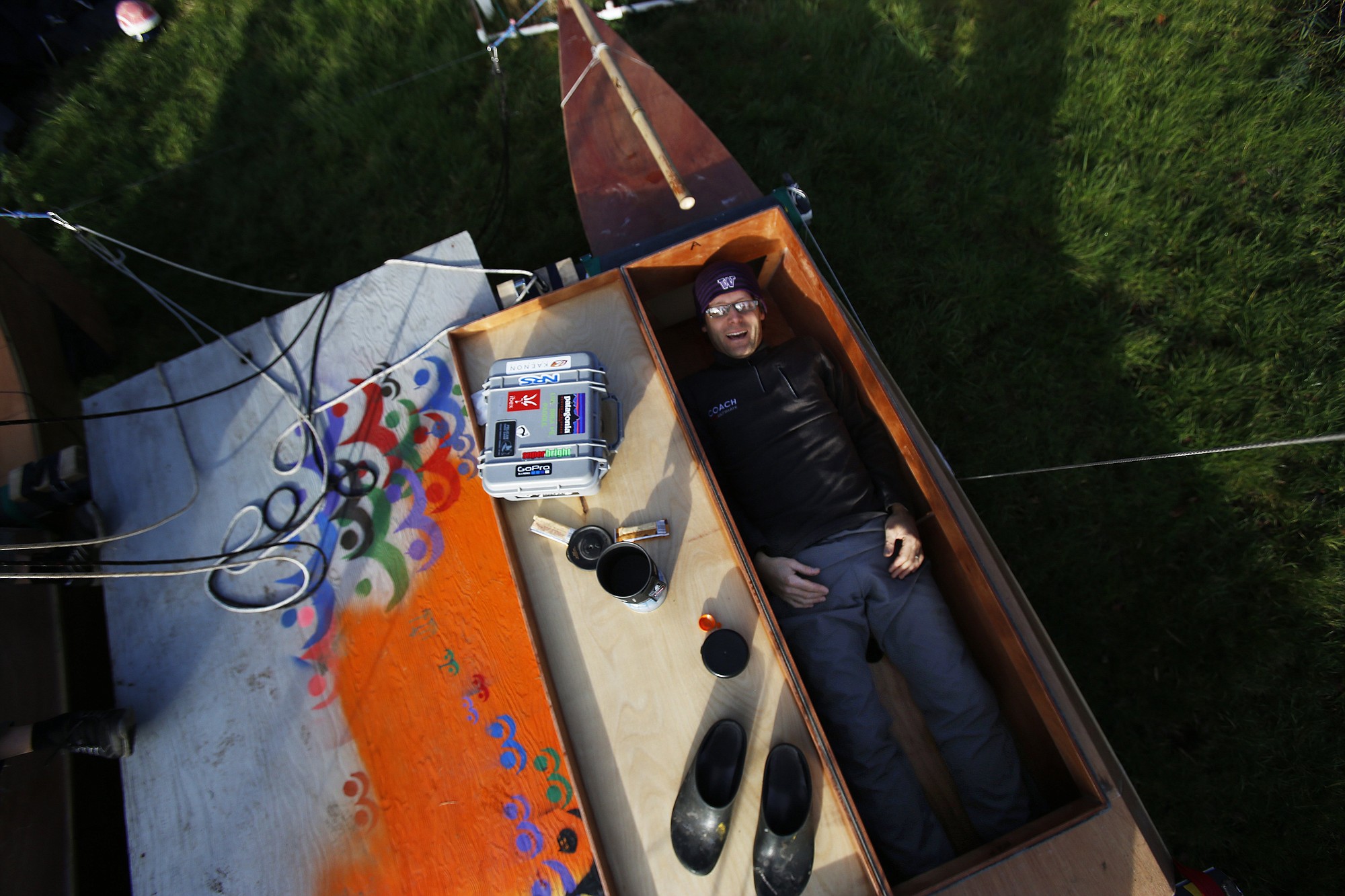SEATTLE — Using only their wits, the wind and lots of muscle power, more than 100 of people in more than 50 crafts set off early Thursday on Stage 1 of a 750-mile ocean-going race that weaves its way up the Inside Passage, a treacherous coastal waterway through a spackling of islands known for its dramatic tidal changes and spectacular scenery.
The inaugural Race to Alaska has drawn rowers, sailors, canoers and kayakers from across the country to compete in a contest that only has a few rules — no motors allowed and no help once you start.
Team Golden Oldies, a six-member crew aboard a 38-foot multihull sailboat, were first to arrive at the Stage 1 finish line after about four hours of racing. They were followed by two other sail teams — Team Elsie Piddock and Team MOB Mentality. A half-dozen other teams were still on the Washington side of the Strait of Juan de Fuca and the bulk of the racers were halfway across.
The first to reach Ketchikan, Alaska, will take home $10,000. Second place gets a set of steak knives. Everyone who enters gets a T-shirt and bragging rights.
Racers who must go ashore along the way must be aware that the region is brown bear habitat. They also are warned that taking a swim for any reason can be deadly — the average water temperature is about 50 degrees and spending more than a few minutes in the water can result in hypothermia.
The vessels entered range from 10-foot row boats to sailing kayaks to a 38-foot catamaran, said race organizer Jake Beattie.
Thursday’s Stage 1 segment took racers from a northern point on the Olympic Peninsula across the Strait of Juan de Fuca — passing through two heavily trafficked shipping lanes and the Canadian border — to Victoria, B.C. It’s about 40 miles with a lot of exposure and strong currents.
Stage 1 is designed as a shake-down and weed-out, Beattie said. Some who planned to try the entire 750-mile course may learn quickly their plan was foolhardy. And others who thought they could only complete Stage 1 may learn it’s easier than they thought.
“Some plan to use the first race to decide what they want to do in the next couple of weeks,” Bettie said.
Therefore, the starting list for Stage 2 — the rest of the race — won’t be known until the morning the gun goes off in Victoria.



